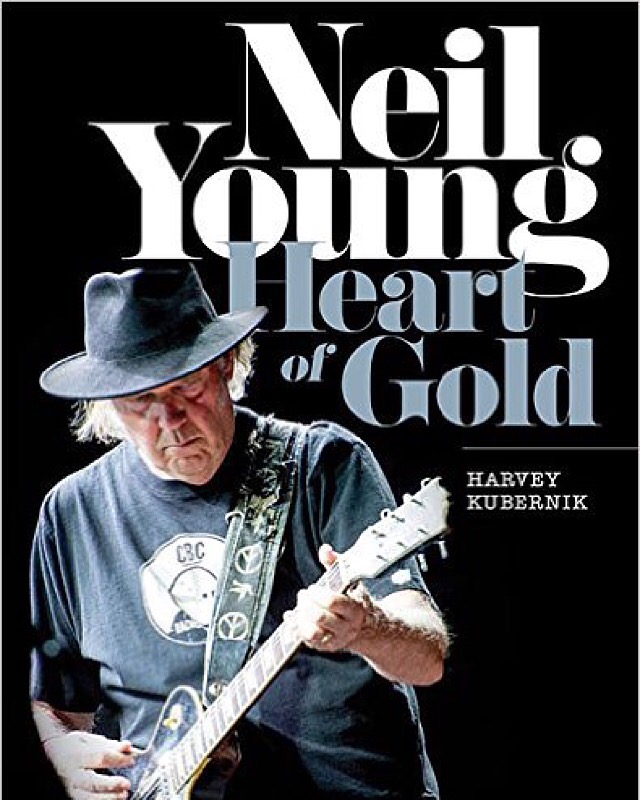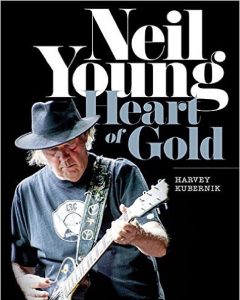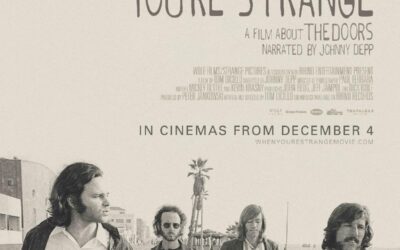By Harvey Kubernik c 2016
Since 2012, Neil Young has issued the albums Americana, Psychedelic Pill, A Letter Home, Story Tone, Live at the Cellar Door, The Monsanto Years, and Earth. He has touted PONO, a high definition fidelity audio delivery service, and LincVolt, a zero-emissions auto technology, performed a stunning series of solo concerts in North America, and constantly drawn attention to environmental concerns. Young has published two autobiographies, Waging Heavy Peace and Special Deluxe: A Memoir of Life & Cars, all while assembling the projected retail release of The Neil Young Archives (Vol. 2).
Young has done concert dates with Crazy Horse on The Alchemy Tour, and a slew of live gigs with Promise of the Real with Lukas Nelson and Micah Nelson, sons of country legend Willie Nelson. They have just embarked on a European Rebel Content Tour that opened in early June in Scotland, and scheduled to conclude July 23 rd in Austria. On October 8 th and 15 th , Young will be sharing the stage with fellow headliner Paul McCartney at the Desert Trip festival in Indio, California.
Young’s 2016 album Earth, just issued June 17 th , incorporates concert renditions from last year’s tour behind The Monsanto Years. Earth contains 1970’s After the Gold Rush through 2015’s The Monsanto Years. There’s also one 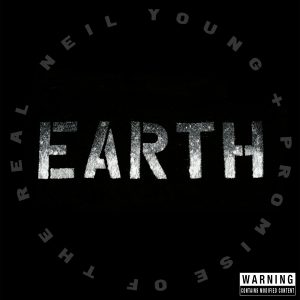 previously unreleased song: “I Won’t Quit.”
previously unreleased song: “I Won’t Quit.”
Earth combines live versions of tunes with the Promise of the Real band meshed with ambient elements like insects, animal sounds and car horns. “Ninety-eight uninterrupted minutes long, Earth flows as a collection of 13 songs from throughout my life, songs I have written about living here on our planet together,” Young explained in a Reprise Records press release announcing the album.
“Our animal kingdom is well represented in the audience as well, and the animals, insects, birds and mammals actually take over the performances of the songs at times.” Young debuted Earth at a May 6 th listening event at the Los Angeles’ Natural History Museum.
A director’s cut of Neil Young’s 1979 concert film Rust Never Sleeps was released during July on DVD format. It captures Neil Young and Crazy Horse during their 1978 American tour. The ’78 concert at the Cow Palace in Daly City (San Francisco) mixes acoustic tunes like “Sugar Mountain” and “After the Gold Rush” with harsh renderings of “Cortez The Killer,” “Sedan Delivery,” and “Powderfinger.”
Young’s low-budget movie, Human Highway, a post-apocalyptic comedy from 1982, which he co-wrote and co-directed, featuring Young, Dennis Hopper, Dean Stockwell, Russ Tamblyn, Charlotte Stewart, and DEVO is officially released in mid-July.
While hardcore Neil Young fans, some record collectors and a salivating music media eagerly await his Archives (Vol. 2) package, I suggest that you might want to immediately read about Toronto-born Young’s early life in Canada in author Sharry Wilson’s impeccably researched and written, Young Neil. The Sugar Mountain Years, published by ECW Press in Toronto. Wilson’s debut book chronicles Young’s life from 1945 to 1966. Her tome traces Young’s Canadian bands that eventually guided Neil to his fateful meeting with Stephen Stills and consequential formation of Buffalo Springfield in Hollywood.
“Surely no book has offered more insight and depth regarding Young’s formative years as Sharry Wilson’s impressive and exhaustive Young Neil. . . . What could so easily be a dry narrative is brought to life by Wilson's impressive access and a novelist’s feel for language. Young Neil rips along at a fast pace, and you feel as if you’re there as Young struggles with the breakdown of his parents’ marriage and finds his musical feet. . . . Eye-witness interviews, accompanied by some superb archive images, help make this a book that’s as much essential social history as it is musical biography. For those who pore over Young’s career, this is an essential purchase.” — -Joe Minihane, Record Collector
Sharry Wilson has worked for many years as a professional proofreader in publishing and advertising industries. Born and raised in Toronto, she lives just north of the city with her husband. Young Neil: The Sugar Mountain Years is her debut book.
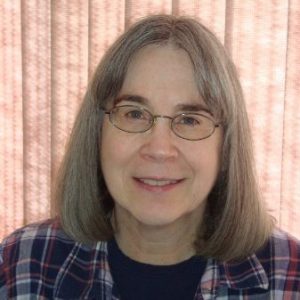 Harvey Kubernik Interviews Sharry Wilson
Harvey Kubernik Interviews Sharry Wilson
HK: Tell me about the genesis of Young Neil: The Sugar Mountain Years.
SW: I had written more than a dozen articles over a ten-year period for Broken Arrow, the quarterly magazine of the Neil Young Appreciation Society (NYAS). After being in publication since 1981, the magazine’s last issue was in June 2014. It included a review of Young Neil: The Sugar Mountain Years by long-time Broken Arrow editor Scott Sandie.
“I was also interviewed by Bernie B. Shakey (a pseudonym for one of the NYAS members) and this interview was included in the last issue as well. Many of the articles I wrote for Broken Arrow were based on Neil’s early years in Canada, culminating in a lengthy two-part article, “A Shakey Education,” that appeared in the February and May 2010 issues. The article covered Neil’s school days in Ontario, Florida and Manitoba. Young Neil is basically an expansion of this work.
HK; Did you feel there was a market and public interest that needed to know about Young’s life before age 20 and his move to Hollywood?
SW: Neil’s early years in Winnipeg were most capably covered in the early 1990s when Don’t Be Denied by John Einarson was published. I enjoyed the book a lot but felt his earliest years, prior to his move to Winnipeg, had not been covered adequately.
“Neil spent the first 14 years of his life in Ontario, and many of his childhood experiences are reflected in a number of his songs and also figure prominently in his two memoirs. I also felt that I could add something to the conversation regarding his formative musical years in Winnipeg, Fort William and Toronto.
HK: What were some of the most rewarding discoveries in the research and interview process?
SW: I had been aware for many years that Neil’s father Scott Young, an iconic Canadian journalist/author/broadcaster in his own right, had donated his papers, memorabilia, photographs and other items to the Trent University Archives in Peterborough, Ontario. The entirety of this material is referred to as the Scott Young fonds. I knew that some of this material pertained to Neil and there was strong evidence that some of it related directly to Neil’s childhood. I discovered a treasure trove of family photos, personal correspondence, newspaper clippings, school assignments, drawings and much more. I made approximately a dozen day trips to the Trent University Archives over a period of four years. I was ideally situated in Toronto because the drive to Peterborough was only 1-1/2 hours due east. The interview process also proved to be very rewarding. I distinctly remember the thrill of learning entirely new information and discovering photos that had never been published 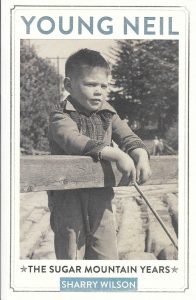 before.
before.
HK: What aspects of Neil Young’s upbringing and musical journey still inform his career?
SW: References to Neil’s childhood and early years as a musician are reflected in the lyrics of a number of his songs. “Helpless,” “Journey Through the Past,” “Time Fades Away,” “Ambulance Blues” and “Don’t Be Denied” are probably the most obvious examples. “It’s A Dream” and “Far From Home” from Prairie Wind, “The Hitchhiker” and “Love and War” from Le Noise, and “Born in Ontario” and “Twisted Road” from Psychedelic Pill are more recent examples in the same vein.
“The many moves he experienced while young helped him roll with the punches and deal with constant change in his life. He likes to keep moving forward all the time. He learned to appreciate cars and the open road during his early years when his family drove great distances, including trips to Florida and travelling from Toronto to Winnipeg. His interest in cars has lasted his entire life. He enjoys being on his tour bus, moving on to the next gig. More recently, his interest in cars has translated into a deep commitment for clean energy, in vehicles and in all walks of life.
“Neil’s principal interests as a child were chickens, cars and trains. Songs such as “Boxcar” and “Southern Pacific” contain direct references to trains. Special Deluxe, his second memoir, was organized around his love of old classic cars. “Long May You Run” is Neil’s ode to “Mort,” his first hearse.
HK: How did you get this book published? Isn’t this your first book?
SW: Young Neil: The Sugar Mountain Years is my first book. I had completed Part 1 of the book (Neil’s earliest years in Ontario and Florida), and decided I had written enough to submit a book proposal to a publisher. I had a vision and I knew where I was going with the rest of the book. I had worked in the publishing industry for many years as a proofreader so I was familiar with the general publishing landscape in Toronto. I strongly felt that my book should be acquired by a Canadian publisher because of Neil’s status as a Canadian music icon. I also felt that the book would hold great appeal to a Canadian publisher for various reasons, including its eligibility for government grants for the arts. I did my research and immediately zeroed in on ECW Press of Toronto, a long-time independent publisher. I noticed the wide variety of books they published and then checked out the titles more closely in the Memoir & Biography section. I delved further into the Music section and instinctively felt that my book would be at home among the other titles.
“ECW Press accepts unsolicited works of non-fiction from both Canada and the U.S. so there was no need to acquire an agent. I felt that I could present the book proposal to good advantage on my own. I realized that my book proposal had to grab their attention and stand out from all the other e-submissions they received. I decided to go the snail mail route instead. I had some stunning never-before- seen photos so I selected about 10 of them, had them blown up to a healthy size, and included them along with a sample chapter, the synopsis, my credentials and other pertinent information and sent if off via overnight courier. I received a positive response within 24 hours of its delivery. I was asked if I had the rest of the book written yet, and if so, they’d be interested in seeing it. I found this very encouraging and told them that I was working on the rest of the book and that I’d be in touch when it was completed. I delivered the manuscript about 6 months later, received promising e-mail messages and was rewarded with a contract six weeks later.
HK: How ‘bout the recent The Monsanto Years, recorded with Lukas and Micah Nelson.
SW: The Monsanto Years, Neil’s protest album against big agribusiness and the corporations that support it. Neil has been acutely aware of this problem since participating in the first Farm Aid benefit in 1985. And Lukas and Micah Nelson, Willie’s sons, were there too. They’re obviously sympathetic to the cause and have known “Uncle Neil” a long time via contact with their father.
“I can’t say that The Monsanto Years is one of my favorite albums. The lyrics to most of the songs are rather simplistic and I’m not really a fan of mixing too much politics with music. A little bit is OK, but I think a little bit goes a long way. My favorite track is “People Want to Hear About Love.” I think it’s the album’s most accessible track with a catchy melody and simple, yet meaningful, lyrics.
“And now we have Earth, which was released in June. It’s composed of songs from live performances with Promise of the Real during the Rebel Content Tour in 2015, mixed in with sounds from nature so it’s not really a studio album per se.
HK: Unlike many classic rock artists still touring, Neil Young can’t be viewed as an oldies act. His new album Earth certainly owes very little to albums he had done previously.
SW: I see Earth as the musical extension of his earlier commitment to causes such as Farm Aid, the environment, alternatives to fossil fuel, climate change and the rights of Native Peoples. He pointedly addresses some of these concerns in recent albums such as Storytone and The Monsanto Years.
“The difference with Earth is that the songs are from live performances and that sounds from nature are also included throughout the album. He has, indeed, been sporting T-shirts during the Rebel Content Tour that are stamped with a single impactful word such as EARTH, SOIL and PROTECT.
HK: Talk to me about the solo acoustic shows Neil did in 2015. The one I saw in Hollywood was marvelous.
SW: I presume you attended one of four dates he played at the Dolby Theatre in Hollywood – March 29 and 30, and April 1 and 2, 2014 during his Solo Tour. The set lists were wonderful during that tour, mixing up some of his more popular tunes with some lesser known gems, all achingly beautiful and heartfelt. “Only Love Can Break Your Heart,” a regular on the set lists during that tour, was the song that compelled me to purchase After the Gold Rush. It had received a lot of radio play during the fall of 1970 and I fell hard for it. I loved the melody, the lyrics and Neil’s unique vocal styling. I’m also a huge admirer of Neil’s piano songs and he included “Philadelphia” on that tour. He also played some covers of artists he admires such as “Changes” by Phil Ochs, “If You Could Read My Mind” by Gordon Lightfoot, “Blowin’ in the Wind” by Bob Dylan and “Reason to Believe” by Tim Hardin.
HK: I suspect the album Time Fades Away will be housed in Young’s Archives (Vol. 2) box set.
SW: I think Time Fades Away will definitely be included in The Neil Young Archives (Vol. 2), whenever Neil gets around to releasing it. (We’ve been patiently waiting but I think Neil got sidetracked along the way.)
“In October 2009, Neil told Guitar World that a disc called Time Fades Away II would also be included in the second volume of the Neil Young Archives, noting: “It’s interesting because [Time Fades Away II] has a different drummer than what was on that album. Kenny Buttrey was in there for the first half, and Johny Barbata came in for the second. It’s a completely different thing, with completely different songs.” Neil also mentioned that "four unreleased albums from this period are being rebuilt — Chrome Dreams, Homegrown and Oceanside-Countryside (three unreleased studio albums) and also an unreleased Odeon-Budokan live recording from this period produced by David Briggs and Tim Mulligan.
“Neil stated in May 2014 that Vol. II would be completed by the summer, and that the remaining volumes would be issued relatively quickly following the second. Despite this, however, there is still no indication that Vol. II will be released anytime in the near future.
HK: Let’s discuss the Times Fades Away LP. Some fans are possessed by that album and confused by the non-availability of the disc for many years.
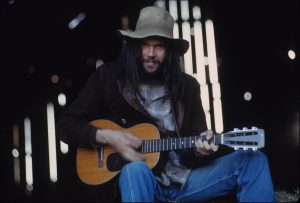 SW: I still have my original vinyl copy of Time Fades Away with the fold-up lyrics sheet written in Neil’s own hand. I purchased it as soon as it was released in 1973. I love the entire album and would certainly rank it among my top 10 favorite Neil albums. However, Neil has remarked numerous times that he doesn’t care much for Time Fades Away.
SW: I still have my original vinyl copy of Time Fades Away with the fold-up lyrics sheet written in Neil’s own hand. I purchased it as soon as it was released in 1973. I love the entire album and would certainly rank it among my top 10 favorite Neil albums. However, Neil has remarked numerous times that he doesn’t care much for Time Fades Away.
“He was going through some heavy emotional issues with various band members and no one was getting along very well. There was a lot of internal turmoil and strife, including money hassles. Neil does not have fond memories of that tour and has stated that Time Fades Away is his least favorite album. I like the album because a number of the songs are highly autobiographical, including the title track, “Journey Through the Past” and “Don’t Be Denied.”
There are also a few delightfully wonky numbers included on it – “Yonder Stands the Sinner” and “Last Dance.” The album was unusual at the time because it was a live recording of previously unreleased material. Neil was very much into an “audio verite approach” to recording rather than regurgitating another Harvest to satisfy public demand.
HK: Can we examine Neil Young’s work from 1972-1980? I’m sure there are some albums you still play and some specific songs and recordings that need to be heard or re-discovered. Perhaps the planned box will put some of them under the microscope.
SW: I always associate the period from 1972-1980 as one of Neil’s most fruitful. The decade starts off with a bang with Harvest, released on Feb. 1, 1972. I listened to it a lot back in the day but hardly listen to it anymore these days. The albums that still hold appeal for me from this period include Time Fades Away, released on October 15, 1973; On the Beach, released on July 10, 1974; Tonight’s the Night, released on June 20, 1975; Zuma, released on Nov. 10, 1975; and Rust Never Sleeps, released on June 22, 1979. These albums all have excellent songs on them and they still sound vital and fresh today. The 70s were an extremely productive period for Neil.
Many of the songs on the above albums, at least until 1974-75, were inspired by his relationship (and then break up) with Carrie Snodgress. “The “Ditch Trilogy,” comprised of Time Fades Away, On the Beach and Tonight’s the Night, are especially worthy of re-discovery. These three albums were not immediate fan favorites but long-time Neil fans really appreciated them. Zuma is also one of my favorites and I still listen to it regularly. It’s one of the great Crazy Horse albums. I think Harvest and Rust Never Sleep are probably the most accessible 1970s albums for casual Neil fans.
HK: This century Neil has published two memoirs. What were things you enjoyed about them? Does Neil’s voice work on the printed page?
SW: I’ve read both of Neil’s memoirs – Waging Heavy Peace and Special Deluxe – and enjoyed them immensely. I feel that Waging Heavy Peace really captures Neil’s voice. It feels like Neil is sitting right beside you and talking to you. It’s written in a stream of consciousness manner without any thought given to chronology. There are also parts that are repetitive, especially when he discusses PONO. Special Deluxe is structured more tightly and follows a logical chronology. I thought it was ingenious of Neil to think of including his own artwork – simple watercolor paintings of his favorite cars — and use them as a device to tell his story. Each of the cars holds special memories for Neil and his recollections are very interesting to read about.
HK: 2016 also scheduled a DVD release of a Neil Young 1979 concert film Rust Never Sleeps. A live document with Neil backed by Crazy Horse. The movie was first made available on DVD in September 2002.
SW: I saw the concert film when it was originally released and loved it. I think it’s great that the film is being offered in DVD and Blu-ray format. “I saw the show live at Maple Leaf Gardens in Toronto on October 1, 1978. It was the first time that I had a great seat for one of Neil’s shows. We were sitting just left of center in the sixth row on the floor. I remember being in awe of the massive stage props – the huge microphone and amps. Neil wore a white T-shirt and pants that were held up by suspenders. He looked very young and innocent. He appears on stage as the top of a large box is lifted. He’s in a crouching position and gradually unwinds to standing position, holding his guitar. “Sugar Mountain” is followed by “I Am A Child,” totally fitting the overall vibe. I thought the Roadeyes scurrying about the stage were really great and added to the unique atmosphere. “Many of the classic Crazy Horse songs were played that night. The encore was “Tonight’s the Night,” sung with so much passion by Neil. The Rust Never Sleeps show was one of my all- time favorite live Neil shows.
“It’s interesting to note that Neil re-used the props from the Rust Never Sleeps tour during his more recent Alchemy Tour with Crazy Horse in 2012-2013. The same props were used but instead of Roadeyes there were scientists walking around in white lab coats.
HK: Young’s Human Highway movie has just been issued on DVD.
SW: I first saw Human Highway when it was originally released in 1982. I saw it again in September 2014 when the “Director’s Cut” of the film was screened at the Toronto International Film Festival (TIFF). Neil introduced the film and was also present for a brief Q & A session after the screening. My takeaway from the film is that it is even more relevant today and can be seen as a warning of environmental disaster and what can happen if people don’t pay attention to what is happening in their own backyards and let things go unchecked.
“I think Neil chose to resurrect the film (with noted improvements) because it still holds relevance today, perhaps even more so. The residents of Linear Valley in the film are complacent about living next door to a nuclear power plant. They just go about their daily lives blissfully ignorant of the danger in their midst. Nobody does anything to counteract an obviously earth-shattering situation. (The members of DEVO are brilliantly cast as nuclear garbage men). Neil’s mantra for quite a while can be found in the lyrics to “Who’s Gonna Stand Up and Save the Earth?”
HK: Can we focus a bit on Neil young’s charity-related activities as well as the Bridge Concerts.
SW: I think Neil’s philanthropic efforts and interest in different causes has grown organically over time. The first Farm Aid concert was in 1975 and the first Bridge School Benefit concert was held in 1986. He’s become more committed over time and his interests have widened. Neil is certainly passionate about his concerns for the planet, ecology and the rights of Native Peoples and this has naturally impacted his songwriting and performing. In recent years Neil has repeatedly expressed that he plans to commit more time to activism for various causes and perhaps less time on music and touring. However, he seems to have found a way to do both these days by touring extensively with Promise of the Real and writing songs that deal with his concerns. I have to admit that his recent songs are not my favorites. You can feel his passion in the songs but the lyrics seem rather weak and the melodies aren’t that memorable. I think it’s hard to separate politics from music, especially for someone like Neil who expresses himself so deeply through his songs.
HK: Why has Neil had this constant need and desire, beyond economic considerations, to constantly tour and go on public display? One of my theories is that, like Prince, who was also suffered from epileptic seizures for a few years, coupled with his childhood bout of polio, Neil has this relentless need of attention and acknowledgement, knowing he had beaten some severe health issues.
SW: It’s an interesting theory but I don’t think his early experiences with polio and epilepsy have impacted his current career and various related activities. That may have been the case during his earlier career but now I think it’s more a case of him confronting his own mortality. He’s trying to get as much done as possible because he realizes he may not have that much time left. He wants to accomplish more, especially in regard to his concern for the environment and eco activism in general. He reveals near the end of Waging Heavy Peace that he was diagnosed with early signs of dementia. This occurred not long after his aneurysm surgery. This would understandably have played a significant role in him facing his own mortality.
“Neil’s father Scott suffered from Alzheimer’s during his final years and it was very painful for Neil to witness. I think Neil is worried that he’ll suffer the same fate so he wants to get as much work done as possible while he still can. Neil actually addresses this point in Waging Heavy Peace and admits that he’s had some deep concerns about it. In recent years he’s also witnessed the passing of some of his closest friends, including L.A. Johnson, Ben Keith and Rick Rosas. At Farm Aid in 2005, while introducing his cover of Phil Ochs’ “Changes,” Neil stated, “Life is short, folks!”
HK: Besides your book, Young Neil, and my own 2015 Neil Young study, Heart of Gold, can you suggest additional Young-related titles readers might check out?
SW: Shakey by Jimmy McDonough, Neil Young: Zero to Sixty by Johnny Rogan, Neil Young Nation by Kevin Chong, Don’t Be Denied by John Einarson, Neil and Me by Scott Young, Love to Burn by Paul Williams, Being Young by Astrid Young and Neil Young FAQ by Glen Boyd.
HK: You have had some work on a Neil Young-themed website, Thrasher’s Wheat. Tell me about the site as well as other Young-driven sites to visit.
SW: Thrasher’s Wheat website recently celebrated its 20 th anniversary. It includes all things Neil Young related and is, quite frankly, Neil Young Central for the ardent Neil fan. Thrasher has kindly included some material about Young Neil and has also referenced some of the articles that I wrote for Broken Arrow magazine in the past, including “A Shakey Education” from 2010. “Other excellent Young-driven sites include Rust Radio (www.rustradio.org) , where live Neil shows are streamed 24/7, and the Sugar Mountain site (www.sugarmtn.org) that includes set lists for all of Neil’s live shows from 1968-2016.
(Portions of this article were previously published in the July/August issue of Record Collector News magazine).
Harvey Kubernik has been a music journalist for over 44 years and is the author of 8 books. During 2014, Harvey’s Kubernik’s Turn Up the Radio! Rock, Pop, and Roll in Los Angeles 1956–1972 was published by Santa Monica Press.
In September 2014, Palazzo Editions packaged Leonard Cohen: Everybody Knows, a coffee—table—size volume written by Kubernik, currently published in six foreign languages. BackBeat/Hal Leonard Books in the United States.
Harvey and Kenneth Kubernik wrote the text for photographer Guy Webster’s first book for Insight Editions published in November 2014. Big Shots: Rock Legends & Hollywood Icons: Through the Lens of Guy Webster. Introduction by Brian Wilson. In November of 2015, Back/Beat/Hal Leonard published Harvey’s book on Neil Young, Heart of Gold
.

